
+91 8095511877

+91 8095511877
Truncus arteriosus (TA) is a rare congenital heart defect. It is a major heart defect that causes affected babies to breathe faster, drink milk with difficulty, and be prone to catch lung infections.
In a normal healthy heart, you will have two major blood vessels coming out of the heart. In babies with this defect, the structure of the heart is altered. So, there is just one blood vessel that does the work of two vessels in a healthy heart. There is also a hole in the heart.
Truncus arteriosus will need open-heart surgery to repair. It is ideal to do the surgery before the baby is a month old. Undue delay can lead to severe complications.
TA is a developmental disorder present at birth. What exactly causes it is not very clear. There are certain factors affecting mothers during pregnancy that increase the risk of TA and other heart defects in babies.
Some of the known risk factors are a family history of heart defects, mother on certain medications in early pregnancy, diabetes in mother from early pregnancy, IVF pregnancy, anomaly scan showing a defect in any other organ system of the fetus (brain, gut, kidney, etc.), mother indulging in alcohol/smoking in early pregnancy, German measles, high fever in early pregnancy.
Since the formation of the heart happens in the first two months of pregnancy, it is then that the above factors play a role! Apart from these, babies with chromosomal disorders like DiGeorge syndrome and velocardiofacial syndrome are more at risk. Truncus arteriosus can also occur in babies without any of these risk factors.
It is important to know how the normal heart works to understand TA better. See figure 1 below.

The left and right parts of the heart have two chambers each. The top two, the right artery(RA) and left artery (LA), are the collecting chambers. The bottom two are the pumping chambers, which are the right ventricle(RV) and left ventricle(LV).
The LV pumps the blood from the heart to the whole body through the aorta. The body's organs use the oxygen in that blood and make the blood impure.
This impure blood then returns to the RA. The RV pumps this to the lungs through the pulmonary artery.
When we breathe, the oxygen in our breath enters the blood and makes it pure again. The purified blood enters LA and is pumped out to the body by the LV.
Thus the heart supports two circuits. The left circuit pumps pure blood to the body, and the right circuit pumps impure blood to the lungs.
In a child with a TA, there are no separate aorta or pulmonary artery. Instead, blood exits the LV and the RV through a vessel (called Truncus). It continues as both the pulmonary artery and the aorta.
There is a large hole in the wall (septum) between the LV and the RV. So, blood flows from the LV and RV to the TRUNCUS. It then flows to the lungs and from there to the body. Every part of the body receives a mixture of pure and impure blood. It also means extra blood ends up going to the lungs. The congested lungs get infected relatively easily. The heart becomes bigger, and pressure on the right side of the heart also rises over time.
Some of the common signs and symptoms of babies with TA include
Usually, the baby fails to thrive and shows poor growth if it does not get proper treatment at the earliest.
A delay in treatment can cause severe complications. Some of the common ones are
The doctor will do a few tests if your baby shows any signs and symptoms of Truncus arteriosus.
The baby may also need a longer stay in the ICU after surgery. After discharge home, your baby with DiGeorge syndrome may have developmental delay and may need daily calcium supplements and extra vaccines for preventing infections.
There are different types of TA based on the anatomy of the Truncus. The types of TA have implications for the surgical team. A certain type (associated with narrowing of the aorta) may need surgery sooner than other types.
If your baby has truncus arteriosus, he or she will need surgery to repair it at the earliest. It is best to do the surgery at a month of age, certainly before 3months of age. After 3months of age, the risk is higher.
The surgery team will have
Your baby will have an open-heart surgery under general anesthesia.
Before surgery
The surgeon will explain what happens during surgery and what to expect in the ICU later. They will tell you about the possible risks and complications as well. Once you give your consent, the surgical team will start preparations for the surgery at the earliest.
Your baby will have a few medicines before surgery. These medicines help to make operation easier and also to keep the baby stable during surgery.
During surgery
During the surgery, the surgeon will perform a few complex tasks. The first step is to separate the Pulmonary Artery from the aorta carefully. The surgeon will then connect this branch to the RV with the help of a tube or conduit. Then the hole in the heart is closed. The duration of the operation will be about four to five hours.
After surgery
Soon after surgery, the surgical team will move your baby to a pediatric cardiac intensive care unit. The doctor/nursing staff will continuously monitor the progress of your baby.
Your baby will have a few tubes and wires coming out from the body. All these are to help your baby to recover. Your baby will also have assistance with breathing through a breathing machine (ventilator) for a few days. Your baby will have food through a tube running from his nose (or mouth) to the stomach.
Once your baby starts recovering well, the tubes and wires will disappear one by one. By the end of the first week, your baby will come back to the room. You remain in the hospital for a few days more. Complete recovery will take a few weeks.
Aftercare
Your baby will not have any major restrictions after surgery. He or she will grow like a normal child.
But like any other heart defect by birth, your baby will need periodic heart check-ups.
As your baby grows, the tube's size may not be sufficient to allow enough blood to pass through it. In such situations, your baby will need surgery to replace the tube with a larger one. Life continues as normal, after replacement.


This article has been reviewed for medical correctness and relevance by
Dr Swati Garekar
Dr Swati Garekar is Consultant Pediatric Cardiologist and Head, Division of Pediatric Cardiology, Fortis Hospital, Mulund, Mumbai, India.Her special interests include echocardiography and fetal imaging, 3D printed heart models and heart failure.
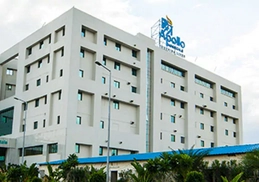
Apollo Chennai
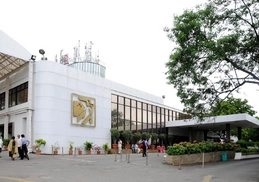
Apollo Health City
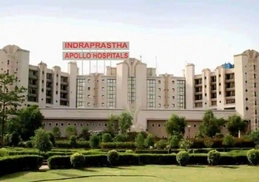
Apollo Indraprastha
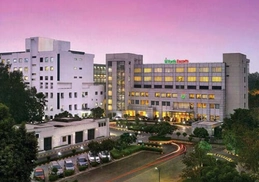
Fortis Escorts
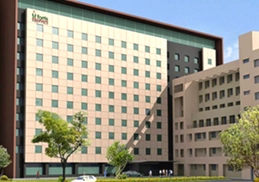
Fortis Mulund

KIMS Hospital Hyderabad
Frequently Asked Questions
What is truncus arteriosus?
Can truncus arteriosus be cured?
Is truncus arteriosus life threatening?
How do you fix truncus arteriosus?